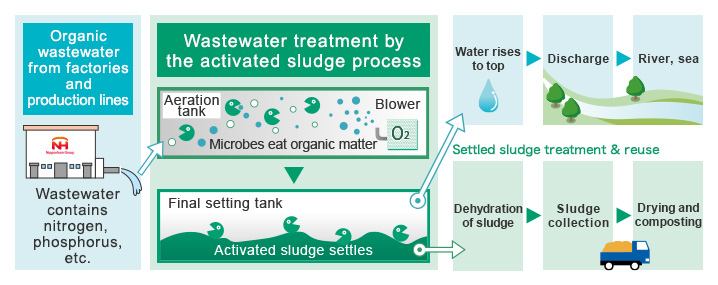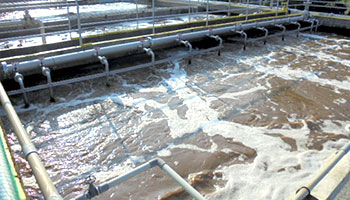Wastewater Treatment
Wastewater generated by business activities is purified to a level of quality that meets wastewater standards at wastewater treatment facilities on the premises before being discharged into rivers, etc.
Wastewater is mainly treated using the activated sludge process*. The degree of wastewater contamination varies depending on factors such as the size of the business site, the type of livestock on the farm, and the variety of products produced at the plant. For this reason, we purify wastewater in an optimal manner for each site, using a combination of various treatment methods centered on the activated sludge process.
Note: A method of purifying wastewater by feeding organic matter, which is the pollutant component of wastewater, to microorganisms in an aerobic environment using activated sludge, a collection of microorganisms that decompose organic matter and continue to multiply.
Wastewater Treatment by the Activated Sludge Process

Improvements in Wastewater Treatment Capacity
Nipponham Southwest Ltd. has installed micro-nanobubble generators in an effort to improve wastewater treatment capacity.
Micro-nanobubbles are bubbles smaller than 0.1 mm (100 µm) in diameter that occur in liquids such as water. Micro-nanobubble generators efficiently send fine air to every corner of the aeration tank, increasing the dissolved oxygen concentration and improving the performance of microorganisms, thereby increasing wastewater treatment capacity.
Nipponham Southwest Ltd. treats and processes cattle and pigs, and the wastewater, including blood, generated during processing can now be purified at a higher level than ever with micro-nano bubble generators.

